 The Mahavamsa or Great
The Mahavamsa or Great
The oldest, continuously recorded history in the world is still being continued.
“Do thou, O lotus-hued One, protect with zeal Prince Vijaya & his followers, & the Doctrine that is to endure in Lanka for full five thousand years.” Mahavamsa
1815-1948 "The Sinhalese voluntarily surrendered their island to the British Sovereign with full reservation of their rights & liberties. They may thus claim to be one of the few ancient races of the world who have not been conquered."
(Sketches of Ceylon History by Sri Lankan-then called Ceylonese-Tamil scholar Ponnambalam Arunchalam, 1906)
Click here http://www.mysrilankaholidays.com/ancient-glory.html
“My effort is not for the joy of sovereignty; it is for the establishment of the Faith of the Buddha forever” King Dutugamunu (161BC-137BC), the hero of the nation waging war against Dravidian invader Elara
Click here http://www.mysrilankaholidays.com/sri-lankan-history.html
Each in their own way, each in their own degree.
1 Mythology prior to the recorded history of
A.
B. Reign of King Kuvera with great splendor & immense grandeur. Descending mythological heights to history, it is also believed flamboyant King Kasyapa (479-497AD) aspired to be the god king with Lion Rock Citadel Sigiriya (WHS) as the very personification of his divinity, to rule his kingdom up high, like the king Kuvera
C. Reign of Yakka tribe King Ravana (a grandson of Malyavath or Sumalin or Malin) of epic Ramayana most possibly around 1810 BC according to Sir William Jones (1746-1794 AD)
D. No legend for another 1200 years
E.6th Century BC Reign of Yakka tribe kings Chulodara & Mahodara & three visits of Gauthama Buddha to the resplendent
2 The Living Historical Tradition.
1 The continually growing mass of myth, legends, ballads, eulogies, heroic poems, biographies, ecclesiastical histories, tales of sacred objects & places, personal records of good deeds, quasi-historical records
2. Sinhala Atthakatha – Historical records of Sangha (Buddhist monks) activities from the earliest times in old Sinhala & Pali
3 The Dipavamsa, the earliest extant chronicle of
4. Samantha Pasadika- narration on introduction of Buddhism
5. Mahavamsa (Great Chronicle)
6. Vamsatthappakasini -Tika or Commentary on the narration in Mahavamsa
7 Extended Mahavamsa
3 Mahavamsa or Great Chronicle of
"One of the greatest contributions of the Sinhalese people to the cultural development of South & South
(Wilhelm Geiger - His Life & Works, Heinz Bechert, 2nd ed., 69)
4 The failure to study Mahavamsa
Mahavamsa is probably the least known of all the world’s chronicles.
Reasons are as follows.
(a) It was not readily available until many centuries after it was first inscribed.
(b) Until about the first century BC the writing of religious scriptures was considered a sacrilege.
(c) During the Ceylonese colonial era, the Pali language of the original suttas was so obscure that few Dutch or British bothered to learn it. Hence Mahavamsa was largely the preserve of monks & elite Sinhalese until philologists became interested in it following the discovery of the Tika (commentary) in 1826. The Tika provided scholars with authenticating information which allowed the Mahavamsa to be fully understood as a work of great epic literature.
Mahavamasa Part 1
Period of narration: 543 BC- 362 AD -history of
Time of the works: about the sixth century A.D.
Place: Mahavihara Buddhist monastery in
Composer: Buddhist bhikkhu, or a monk by the name Thera Mahanama
Part 1
Period of narration: 362 AD-1186 AD continues the story to the end of the reign of King Parakramabahu the great
Time of the works: early in the 13th century
Place: Polonnaruwa
Composer: Buddhist bhikkhu called Dharmakirti
Period of narration: 1186 AD- 1333AD continues the story end of the reign of King Parakramabahu the fourth
Time of the works: later than 1333 AD
Place: not known
Composer: not known
Period of narration: 1333 AD - 1781 AD
Time of the works: in the reign of King Kirti Sri Rajasinha 1747-1781 AD
Place: not known
Composer: Buddhist bhikku Tibbotuvava Sumangala
Period of narration: 1781 AD -1815 AD
Time of the works: British colonial governor Sir William Henry Gregory (1872-1877AD)
Place:
Composer: Buddhist bhikku Panditha Hikkaduwe Shri Sumangala & Panditha Don Andres De Silva Batuwantudawe (1874)
Period of narration: 1815 AD -1922 AD
Time of the works: British colonial governor Sir William Henry Gregory (1872-1877AD)
Place:
Composer: D. H. S. Abeyratne
Period of narration: 1923AD-1948AD
Time of the works: President J. R. Jayawardene
Place:
Composer: Dr. Nandadeva Wijesekara (1986)
Above indicated part 5 in no way do justice to the period concerned. To say the least, it is not a satisfactory narration at all, by any stretch of credulity.
Click here http://www.mysrilankaholidays.com/holy-tooth-relic-temple.html
(Sketches of Ceylon History by Sri Lankan-then called Ceylonese-Tamil scholar Ponnambalam Arunchalam, 1906)
1815- 1948 During the Ceylonese colonial era, Pali language of the original Suttas (sutras) was so obscure that few British bothered to learn it. As a result Mahawamsa (Great Chronicle) written in Pali language was largely the preserve of Buddhist monks & elite & erudite Sinhalese.
1826 Interest in Mahawamsa by the philologists following the discovery of
1837 First translation of Mahawamsa by Turnour (Englishman)
1889 Second translation by L. C. Wijesinha (Sinhalese)
1908 A Critical edition in Pali was made by Prof. Wilhelm Geiger Ph. D. (German) published by the Pali Text Society
1910 Translation into German by Prof. Geiger of his own revised critical edition published by the Pali Text Society in 1908
1912 Translation of German edition into English by Dr. Mabel Haynes Bode
1948 End of British Colonial rule:
1990 Translation by Dr. W. P. Ananda Guruge (Sinhalese) M. P. Birla Foundation,
2003 English language Reprint by offset in
6 Confirmation of Mahavamsa by means of literary works
A large number of Pali & the Sinhalese literary works, such as the Mahabodhivansa, the Pujavaliya & the Nikaya Sangraha not only confirm, but also add to the information in the Mahavansa.
Inscriptions, both
The University of Cambridge, England has 274 volumes of 'Epigraphica Zeylanica' with over 3000 inscriptions from Ceylon (that is more inscriptions than the whole of mainland China has, even though Sri Lanka is only 1/2 the size of the state of New York), including one dating back to 6th century BC. Over 2000 of these have been deciphered, indicating the consistent development of the Sinhalese language.
Epigraphia Zeylanica being Lithic & other Inscriptions of
Vol 1 (1904-1912) & Vol 2 (1912-1927) Edited & translated to English by Don Martino De Zilva Wickremasinghe (Sinhalese)
Vol 3 (1928-1933) Edited & translated to English by Don Martino De Zilva Wickremasinghe (Sinhalese) & H. W. Codrington (Englishman)
Vol 4 (1933-1934) Edited & translated to English by H. W.Codrington (Englishman) & S. Paranavitana (Sinhalese)
8 Historigraphic value of Mahavamsa
It is in the sense of Historigraphic value that the Mahawamsa differs from the Indian epics Mahabarata, Ramayana and others which have no direct historiographic value. If not for the Mahawamsa, the story behind the large stupas in Anuradhapura, Sri Lanka such as Ruwanwelisaya, Jetavanaramaya, Abhayagiri, and the ancient construction & irrigation engineering works would never have been known.
{Click here for
http://www.mysrilankaholidays.com/golden-sand-stupa.html
http://www.mysrilankaholidays.com/jetavana-dagoba.html
9 The Mahavamsa’s sweeping narration describes
(B) The introduction of Theravada Buddhism into Lanka
(C) The great reservoir-based irrigation system of the island
http://www.mysrilankaholidays.com/ancient-sinhalese-irrigation.html
(D) The waves of marauding Dravidian invasions from
(E) The gentle sway of Buddhism that has been instrumental in
(a) the commonwealth that developed between ruler, religion, & populace
(b) the tolerance towards Jainism, Brahmanism & Hinduism
(c) the dilution of the caste system by removing its religious proscriptions
(d) forging a culture of compassion which became the nucleus of the sense of United Biology (live & let live harmony with all living beings, i.e. conservation of wildlife, & wetlands; perseverance of landscape & terrain ; protection of woods & forests; reservations of wildlife sanctuaries & vegetation oases of medicinal herbal plants; development of architecture that ran with the site)
http://www.mysrilankaholidays.com/geoffrey-bawa-hotels.html
10 Ancient
King Valagambahu (104-76 BC) had lost his throne to an army of marauding Dravidian invaders from
http://www.mysrilankaholidays.com/abhayagiri-dagoba.html
As it often refers to the royal dynasties of India, the Mahavamsa is also valuable for historians who wish to date and relate contemporary royal dynasties in the Indian subcontinent. It is very important in dating the consecration of the Maurya emperor Asoka, which is related to the synchronicity with the Seleucids and Alexander the Great. Thus it was the Mahawamsa’s account of the Empire of Asoka that lead to important Indian excavations in Sanchi and other locations, confirming the account. The accounts given in the Mahawamsa are also amply supported by the numerous Stone inscriptions, mostly in Sinhala, found in the
12 Literary value of Mahavamsa
The chapter of "Lion ancestry” narrated in Mahavamsa is no more wondrous than the legend of ancestors of the Roman civilization, the twins
Some Indian Hindus take the Hindu mythological story of the Ramayana literally even today. Likewise, the references in the Mahabharatha to the famous dialogue between Lord Krishna and Arjuna at Kulukshetra, in which the latter is tormented being having to wage war against his relatives (an allegoric intellectual discourse on the conflict between good and evil thoughts and the necessity to destroy evil thoughts), is taken literally by some Indian Muslims to mean that Lord Vishnu (Krishna) actually instructed that one’s enemies, even if they were one's relatives, must be killed!
The name Sinhala or Sinhale means “of Sinha (Lion) blood”. However “Sinha" with Indian variations of Sigha, Singh, Simha, all meaning the "Lion’ is ubiquitous in
14 Establishment of factual nature of the chronicle
I
Click here http://www.mysrilankaholidays.com/mulgirigala.html
15 Priceless contribution to the survival of
“My effort is not for the joy of sovereignty; it is for the establishment of the Faith of the Buddha forever” King Dutugamunu, the hero of the nation waging war against Dravidian invader Elara
The Mahavamsa relates that the Buddha, on the day of Mahaparibbana, addressed Sakra, the king of the gods
"When the Guide of the World, having accomplished the salvation of the whole world and having reached the utmost stage of blissful rest, was lying on the bed of his nibbana; in the midst of the great assembly of gods, he, the great sage, the greatest of those who have speech, spoke to Sakka' who stood there near him: "Vijaya, son of king Sihabahu, is come to Lanka from the country of Lala, together with seven hundred followers. In Lanka, O lord of gods, will my religion be established, therefore carefully protect him with his followers and Lanka.
Click here http://www.mysrilankaholidays.com/ancient-glory.html
On receiving the Buddha’s command, Sakra summoned Vishnu; “Do thou, O lotus-hued One, protect with zeal Prince Vijaya & his followers, & the Doctrine that is to endure in Lanka for full five thousand years.’
Quote The Revolt in the
The Buddha’s blessing of Vijaya & his band of followers & the land which they “went forth to possess,’ foreshadowed the initimate connetion of the Land, the Race & Buddhist Faith. Vijaya himself was a Brahamin in faith, & the best authorities’ opinion is that Buddhism was not actually established in Lanka, & not adopted by the Sinhalese people, until the coming of the Arhath Mahinda Thero, nearly three hundred years later than Prince Vijaya’s landing in the island. Nevertheless the blessing of the Buddha was there; the prophecy was in due course fulfilled; the land & the race flourished, & the arts of civilization were fostered; & through all the vicissitudes of their fortunes from that day to this, the Sinhalese race as a whole 9& therefore the vast majority of Ceylon’s inhabitants), have remained faithful to the Buddha & Buddhist percepts, on which their ancient kings founded their legislation & social organization. Unquote the Revolt in the
Thus the Mahavamsa synchronizes the parinibbana (final extinction) of Buddha with the founding of the Sinhalese race. The central theme of Mahavamsa was the historic role of the island as a bulwark of Buddhist civilization. The intimate connection between the land, the race & the Buddhist faith foreshadowed the intermingling of religion & national identity which has always had the most profound influence on the Sinhalese
“My efforts is not for the joy of sovereignty; it is for the establishment of the Faith of the Buddha forever” King Dutugamunu (161BC-137BC), the hero of the nation waging war against Dravidian invader Elara
In the long epic war of Lanka, King Dutugamunu's army was commanded by ten mighty warriors, Nandhimitta, Suranimala, Mahasona, Gothaimbara, Theraputtabhaya (formerly a Buddhist monk, he gave up the Buddhist order for the sole purpose of saving the Sinhalese & Buddhism from the marauding Dravidian invaders), Bharana, Velusumana, Khanjadeva, Phussadeva & Labhiyavasaba, all of them of superhuman strength & courage sans Achilles heel. Those ten mighty ambidextrous warriors of great strength & courage were ably assisted by great battle elephants. Foremost in strength, beauty, shape & the qualities of courage & swiftness & of mighty size of body was the royal elephant Kandula, who broke open the mighty door of impregnable Dravidian fortress at Vijithapura (city of victory), Anuradhapura.
Click here http://www.mysrilankaholidays.com/kataragama.html
Declaring to the great beat of drums, “None but myself may strike Elara”, King Dutugamunu sought out his rival in the battlefield & challenged him to single combat. Mounted on mighty charging elephants the two warriors fought with long ashen spears; Elara hurled his long spear, Dutugamunu evaded it & led his royal elephant, mighty Kanduala to pierce Elara’s elephant with tusks. While Elara’s wounded elephant crouched bringing his rider closer to his opponent, Dutugamunu unleashed his long ashen spear with mighty force piercing the armour of Elara. Elara fell.
Then was enacted a deed of chivalry which has been commemorated through the centuries. Dutugamunu had the body of his foe cremated on the sot where he fell, built a tomb over the ashes & decreed it royal honors. Whoever passed that spot, were he even king of Lanka, must silence music & pass on foot-a custom that long outlived Dutugamunu’s day
Quote Revolt in the
17 Buddhism’s humanizing influence in Lanka
Quote the Revolt in the
Buddhism has been throughout a humanizing influence in Lanka history. There have been times of retrogression when the sacred precepts were forgotten or ignored; times when alien conquerors imposed on portions of the country their faith & their manners. But again & again these alien kings are to be found adopting the Buddhist faith & ethics, & identifying themselves with the Sinhalese people. And through all these vicissitudes, the teaching of the Doctrine & the practice of faith went on in the temples, the monasteries & the schools. All the materials for the history of
Thus it is clear that the unifying, healing, progressive principle in the entity called
Unquote the Revolt in the
18 Center of Buddhism
The record of the introduction of Buddhism to Sri Lanka from India, the survival of Buddhism in the backdrop of waves of marauding Dravidian invaders who rampaged & pillaged, among other edifices, Buddhist stupas, temples, viharas, monasteries, Buddhist repositories & libraries and the manner in which Buddhism took root, flourished and remained in the island of Lanka, despite it being lost to India through the resurgence of Hinduism is a matter of great significance to the heritage of the world.
Many scholars the world over, in Europe, the
19 Political significance of Mahawamsa
The Mahawama has, especially in modern
Mahavamsa was attacked by demagogue G. G. Ponnambalam hell bent on the continued occupancy of the box seat to which the populace of minority Tamils was favoured to the disadvantage of majority Sinhalese by the British colonialists. The primary cancerous virus of Tamil Racism, G. G. Ponnambalam in the year 1937 & again in 1946, gained notoriety for his infamous 50-50 proposal to Soulbury commission of British colonialists for 25% of representation of the National Assembly to Ceylon Tamils (11.2% of the population) & 25% of representation to other minorities of Moors (7%) & Burghers (0.6%) & remaining 50% of representation to the majority of 69.2% Sinhalese. All the Tamil speaking minorities inclusive of Indian Tamils (Plantation Tamils) amounted to only 30.1%. The outrageous proposal was rejected with sarcasm by the Soulbury Commission chaired by Lord Soulbury.
“The moors did not subscribe to the fifty-fifty theory nor do they want any special privileges. They have faith in the Sinhalese” Sir Razeek Fareed, a leader of other Tamil speaking minority (7% of the population) of Moors (of Islamic faith) of
An inflammatory speech attacking the Sinhalese and the Mahawamsa by G. G. Ponnambalam in 1939, in Navalapitiya leads to the first Sinhala-Tamil riots
An eminent Tamil historian Karthigesu Indrapala argued that the presentation of the Mahawamsa as a work of Sinhala Buddhist Chauvinism is incorrect, and that the Mahavamsa writer was singularly fair in his presentation.









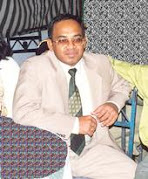













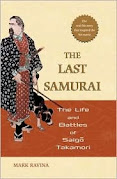


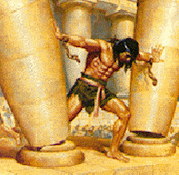







































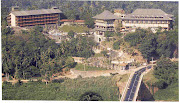








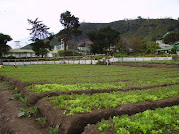














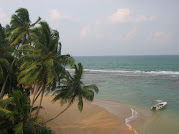












0 Comments:
Post a Comment